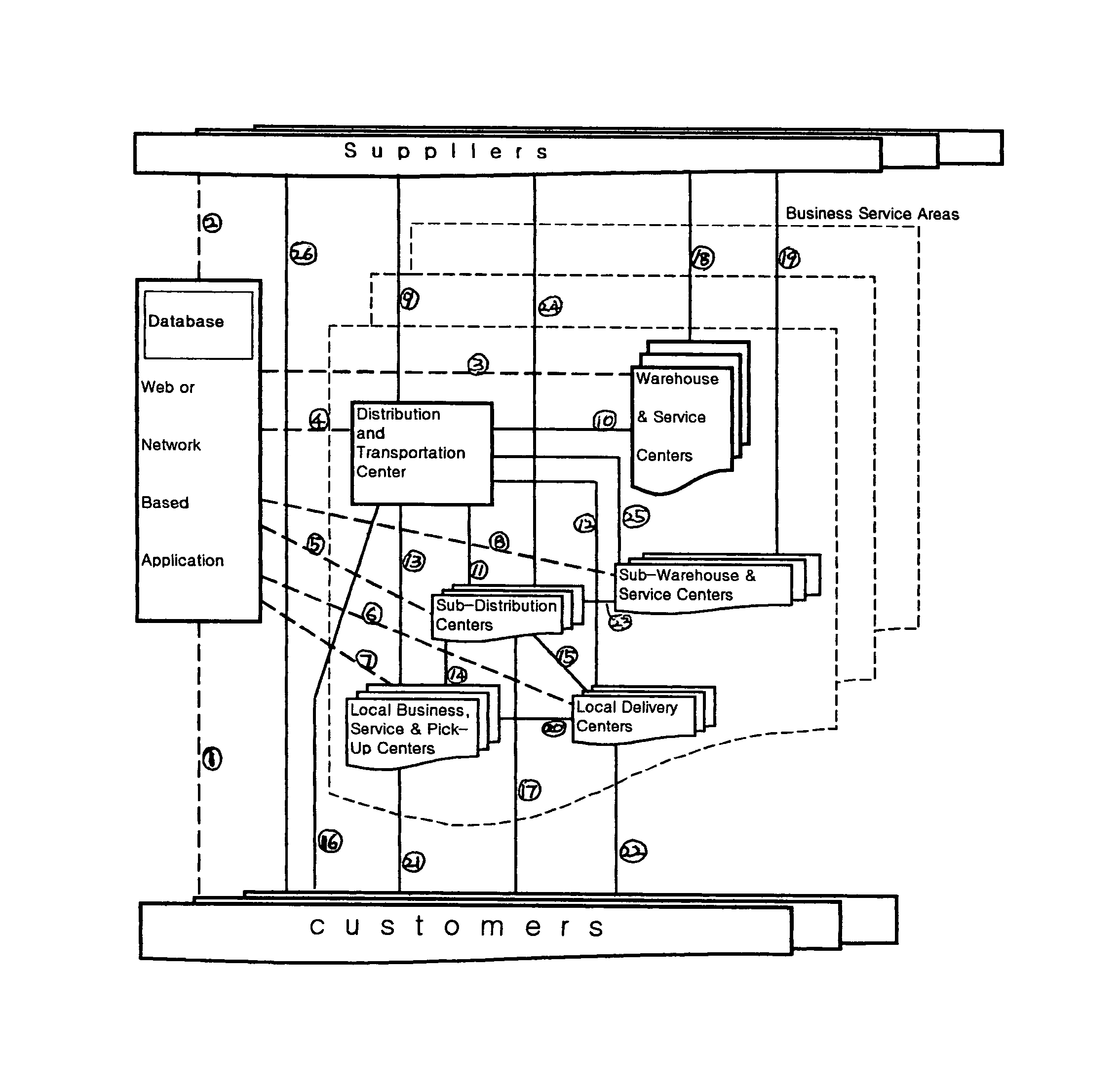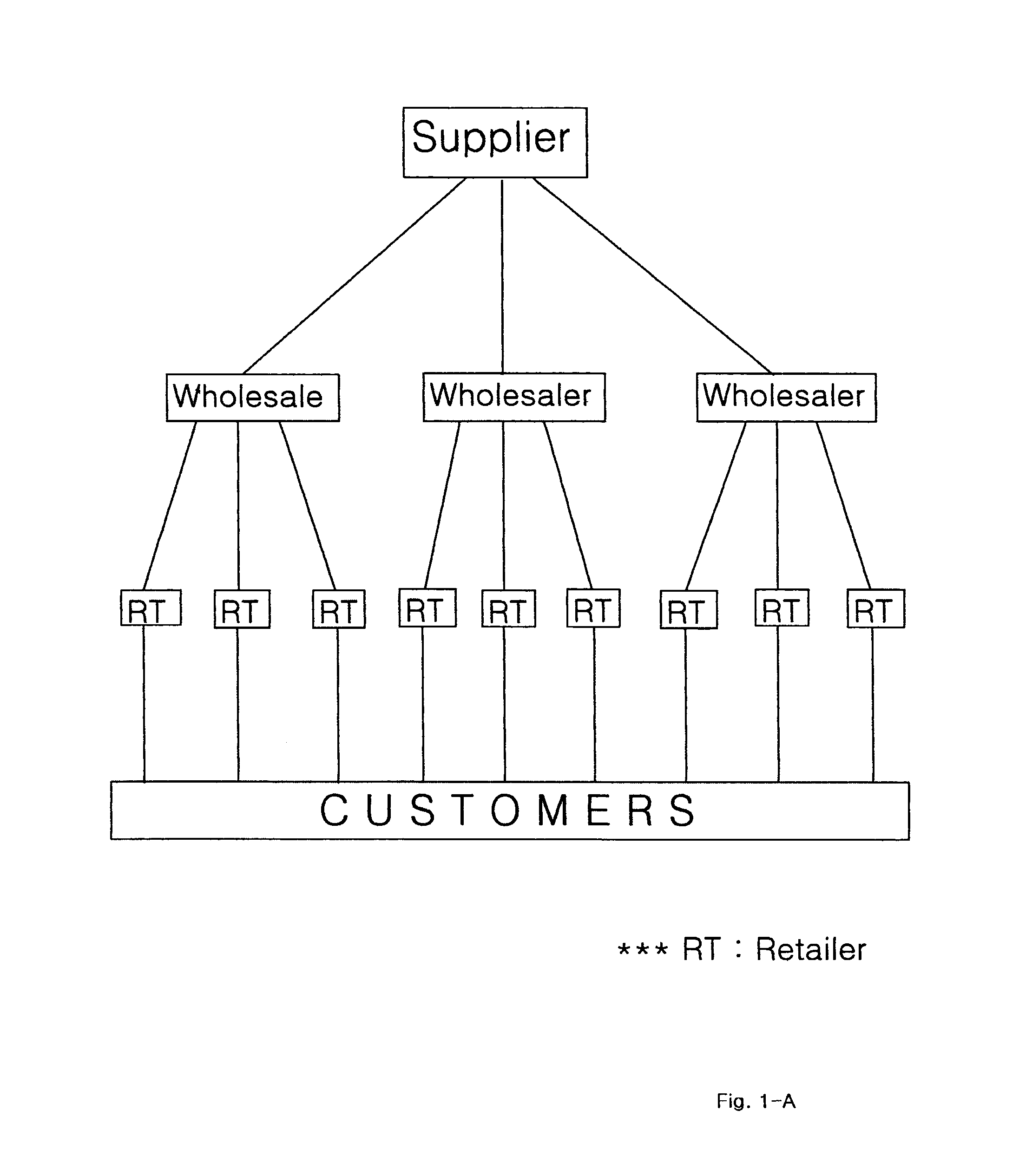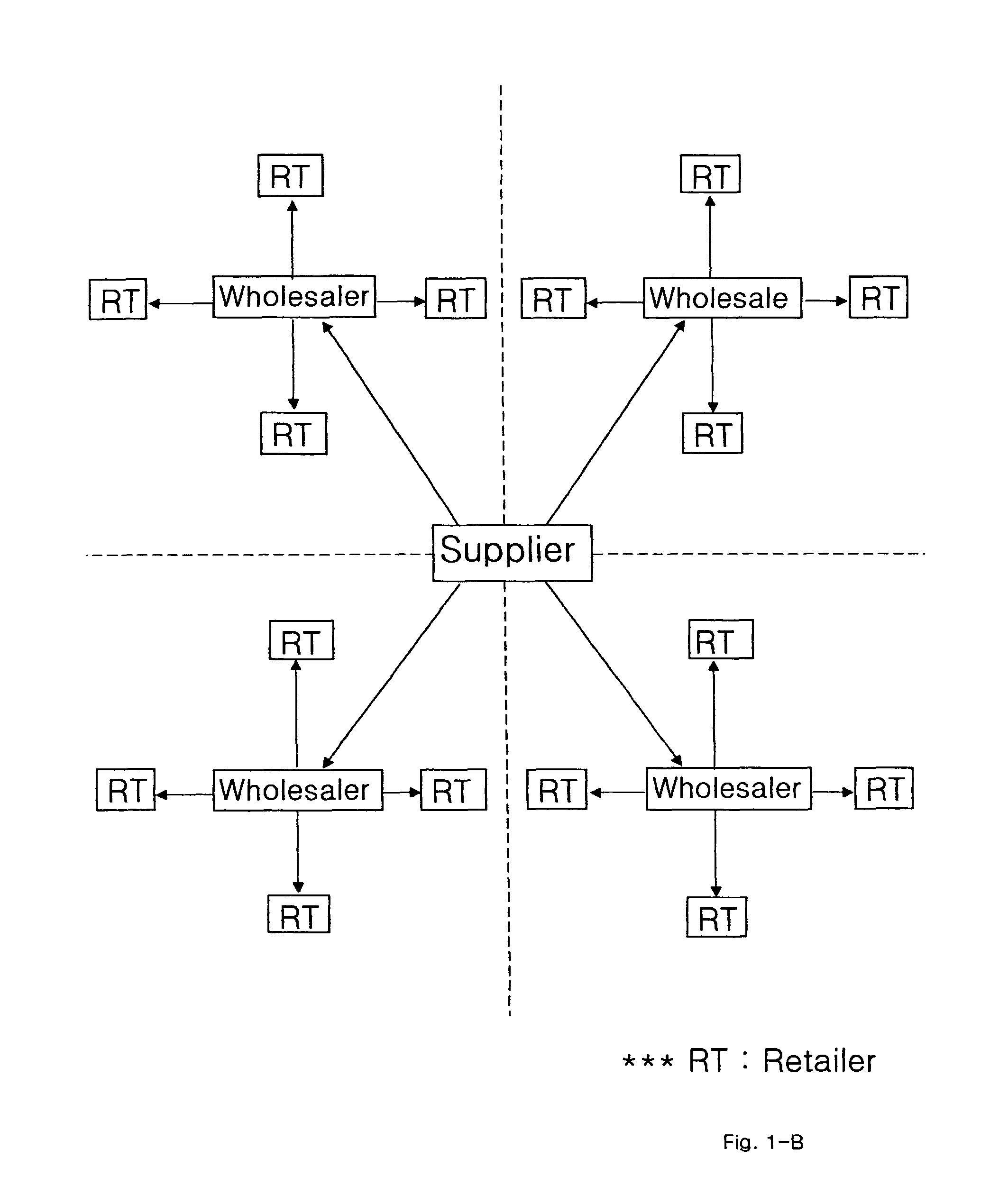However, in some instances, ineffective or inappropriate use of
information technology and systems has resulted in unnecessary inefficiency and inconvenience in the distribution and delivery of goods and services.
The most notable drawback to such systems is the significant mark-up of price for the end
consumer.
Some examples of problems currently facing suppliers and wholesalers include the need for both suppliers (to wholesalers) and wholesalers (to retailers) to mandate minimum purchase amounts and volumes, the need for suppliers to create and operate their own sub-wholesale
distribution system due to geographical constraints, and
slow response to changing customer demands.
These problems will be exacerbated as
product diversity and competition continues to increase.
Another problem facing suppliers is the lack of access to direct information about their end-customers.
Retailers often have direct contact with end-customers, but they generally do not have the scale to influence demand and price based on this information.
However, wholesalers potentially do have the scale to influence demand and price within their area or region.
In addition, under current systems, the opportunity to obtain both one-stop shopping and the best purchase price is very difficult for end customers.
Inventory control is also an important issue for suppliers, wholesalers and retailers.
However, since the purpose of this
system typically is to maximize the profit of the big chain companies operating as wholesalers, and the number of locations for a big chain store will be limited, such systems may be limited in their ability to maximize customer satisfaction.
Also, since this type of distribution
system is inherently a low margin, high operating expense operation, the success of this type of system typically is very sensitive to
market conditions.
And this type of system generally will not be focused on improving customer convenience and satisfaction, since the customers are still isolated from suppliers and the chain companies will need to provide a high degree of focus on operational issues such as
inventory control,
delivery cost, and warehousing costs.
These types of businesses typically have high operating expenses and can also face limitations in their geographical coverage.
Commonly encountered difficulties facing these types of business include:Limited number of drop off and pick-up locations limit the potential customer coverage area.Operating expenses are generally higher in “high traffic” areas that are easily accessible to customers.Additional operating expenses are incurred for franchises and locally authorized agents, such as
franchise fees, royalty payments, and agent commissions.Inability to purchase supplies (i.e. parts, raw materials) in volume to obtain a lower
unit cost.Difficulty in obtaining and
purchasing advanced or
specialty equipment, or resources with specialized skills.Difficulty in maintaining quality due to price sensitivity.Difficulty for customers to compare services and pricing among different providers.
Since this type of business model is often risky, the current marketplace has seen an increase in use of sub-contracted work for service type business or the utilization of a
service department as part of a bigger business.
These types of
service provider businesses present their own problems, such as:Price for services is higher since it reflects additional overhead (cost to sub-contract or expenses for larger business).Difficulty to maintain the level of quality due to sub-contracting or management as part of a larger business.
E-retailers typically do not offer delivery options other than direct delivery to the end customer.
And because the e-retailer typically uses an expensive carrier for delivery, the cost benefits of this type of system to the end customer often are diluted and not fully realized.
E-commerce systems could result in price decreases in some aspects by reducing the roles of retail stores in the traditional market system or big chain company system.
However, because end customers often are geographically scattered, their delivery time and cost will be different.
But the basic problem remains how to reduce
delivery cost from e-retailers to the end customer.
Also, these businesses are limited since they only leverage
the Internet as a customer contact channel and only utilize
payment methods that are secure for electronic commerce.
As a result, these customers generally do not do business with e-retailers.
 Login to View More
Login to View More  Login to View More
Login to View More 


